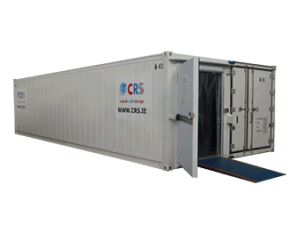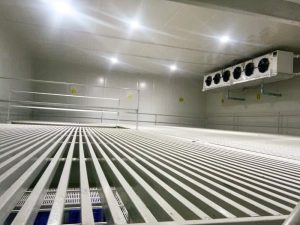Understanding the Two Types of Cold Storage: A Comprehensive Guide
Cold storage is a critical component of modern-day businesses that deal with perishable goods, pharmaceuticals, and sensitive data. It involves preserving items at low temperatures to maintain their quality, safety, and longevity. As technology advances, the methods of cold storage have evolved as well. In this article, we will explore the two primary types of cold storage and delve into their unique characteristics and applications.
1. Refrigeration: A Fundamental Cold Storage Method
What is Refrigeration?
Refrigeration is the most common and widely used method of cold storage. It involves utilizing mechanical systems to lower and maintain the temperature of a designated space or container. This process is achieved by circulating refrigerants through a cycle of compression and expansion, which allows the system to remove heat from the storage environment. The cooled air within the space helps to slow down the growth of microorganisms and enzymatic reactions, thus preserving the quality of the stored items.
The Components of a Refrigeration System
A typical refrigeration system consists of several key components:
Compressor: The compressor plays a crucial role in the refrigeration cycle. It compresses the low-pressure, low-temperature gas refrigerant, raising its pressure and temperature.
Condenser: The high-pressure refrigerant gas then flows into the condenser, where it releases heat to the surrounding environment and condenses into a high-pressure liquid.
Expansion Valve: After leaving the condenser, the high-pressure liquid refrigerant passes through the expansion valve, where it undergoes a rapid reduction in pressure. This causes the refrigerant to cool down and transform into a low-pressure liquid-gas mixture.
Evaporator: The low-pressure liquid-gas mixture enters the evaporator, where it absorbs heat from the storage environment, causing it to evaporate into a low-pressure gas.
Applications of Refrigeration
Refrigeration finds applications in various industries and settings:
Food Industry: Refrigeration is extensively used in preserving perishable food items, such as fruits, vegetables, dairy products, and meat, during transportation and storage.
Medical and Pharmaceuticals: Temperature-sensitive drugs, vaccines, and biological materials require specific temperature conditions, and refrigeration ensures their integrity throughout the supply chain.
Data Centers: Large data centers utilize refrigeration to maintain low temperatures and prevent overheating of servers and other critical equipment.
2. Cryogenic Storage: The Cutting-Edge Cold Storage Solution

What is Cryogenic Storage?
Cryogenic storage is an advanced cold storage method that involves storing items at extremely low temperatures, typically below -150 degrees Celsius (-238 degrees Fahrenheit). At such temperatures, many substances enter a cryogenic state, where their physical properties undergo significant changes. Cryogenic storage relies on specialized materials and equipment to achieve and maintain these ultra-low temperatures.
The Components of Cryogenic Storage
A cryogenic storage system comprises essential components, including:
Dewar Flask or Cryogenic Containers: These containers are designed to withstand extremely low temperatures and keep the stored items insulated from the external environment.
Liquefied Gases: Cryogenic storage commonly uses liquefied gases like liquid nitrogen (LN2), liquid helium, and liquid oxygen. These gases have extremely low boiling points and provide the necessary cooling effect.
Pressure Relief Valve: To ensure safety, cryogenic storage containers are equipped with pressure relief valves that vent excess pressure that may build up due to the evaporation of the stored cryogenic liquids.
Applications of Cryogenic Storage
Cryogenic storage has numerous applications in cutting-edge industries:
Biotechnology and Medical Research: Cryogenic storage is vital for preserving biological samples, cell lines, and genetic materials for research and medical purposes.
Space Exploration: Cryogenic storage is used in the storage and transportation of rocket propellants like liquid hydrogen and liquid oxygen in space missions.
Superconductors: Certain superconducting materials require ultra-low temperatures, achievable through cryogenic storage, to exhibit their unique properties used in advanced technologies.
Choosing the Right Cold Storage Method
Factors to Consider
Selecting the appropriate cold storage method depends on various factors:
Temperature Requirements: Consider the specific temperature range required for storing the items. Refrigeration is suitable for most perishable goods, while cryogenic storage is reserved for materials that necessitate extremely low temperatures.
Cost and Scale: Refrigeration systems are generally more affordable and practical for small to medium-scale storage needs. Cryogenic storage involves higher costs and is best suited for specialized applications or large-scale requirements.
Type of Items: Different items have unique storage requirements. For instance, food products may need specific temperature and humidity conditions, whereas biological samples may require cryopreservation.
Accessibility: Accessibility to stored items is crucial. Refrigeration allows easier access to items, while cryogenic storage requires careful handling and thawing procedures. For commgen latest updates see here.

Conclusion
In conclusion, cold storage is an indispensable aspect of various industries that deal with perishable items, sensitive data, and biological materials. Refrigeration and cryogenic storage represent two distinct approaches to preserving items at low temperatures, each catering to different requirements and applications.
Refrigeration remains the go-to choice for most everyday cold storage needs, providing an effective and economical solution for preserving food, pharmaceuticals, and data center equipment. On the other hand, cryogenic storage offers cutting-edge capabilities, enabling scientists, researchers, and industries to delve into realms that require ultra-low temperatures.
Understanding the differences between these two types of cold storage allows businesses and researchers to make informed decisions and implement the most suitable method based on their specific needs and goals. Whether it’s keeping our food fresh or pushing the boundaries of scientific exploration, cold storage continues to be a vital aspect of our modern world.

Recent Comments